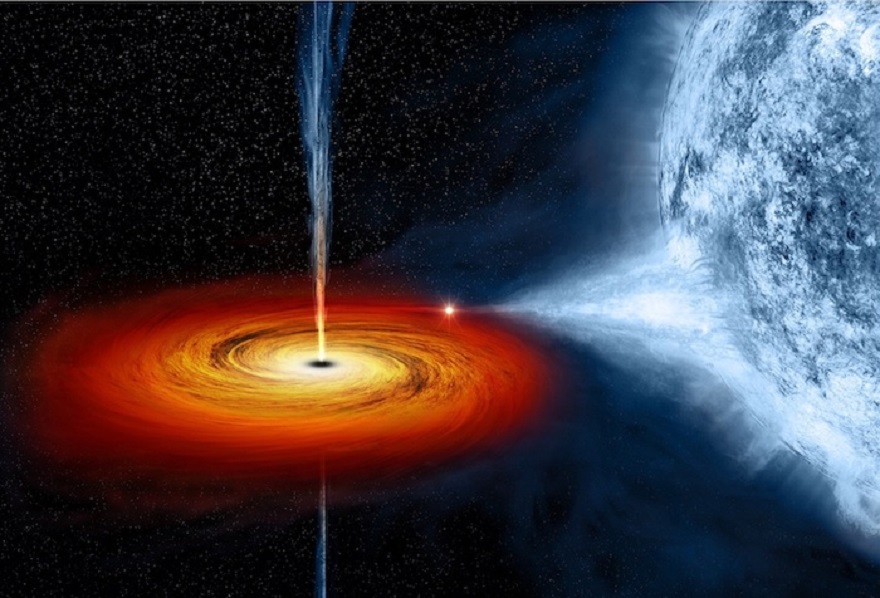Scientists have studied an ultracompact X-ray binary star. The pulsar and the white dwarf that form it rotate around each other in just 50 minutes. Scientists have studied an ultra-compact X-ray binary star. The pulsar and the white dwarf that form it orbit each other in just 50 minutes. Scientists have studied the unusual characteristics of the accretion disk around the first of them.

What are double X-ray stars?
Scientists working with the Nuclear Spectroscopic Telescope Array (NuSTAR) spacecraft and the Neutron star Interior Composition Explorer (NICER) instrument have recently published studies of an extremely close binary X-ray star.
Such systems usually consist of a black hole or a neutron star and an ordinary luminary, or a white dwarf. They orbit each other at a short distance. This causes a flow of matter to the heavier of the components and its accretion. The gas, falling on an extreme object, heats up and generates hard X-ray radiation, which is recorded by telescopes on Earth.
X-ray binary systems, depending on the mass of the companion star, are divided into two classes: light and heavy. And among the first there is a variety called ultracompact X-ray binary. These include pairs in which the components make one orbit around each other in less than 80 minutes.
Neutron star or black hole?
The system that the scientists studied has the designation 4U 0614+091. It was discovered back in 1975. It is known that the orbital period of its components is only 50 minutes and the second companion of the system is a white dwarf.
As for the object on which the substance falls, scientists are not sure about its nature. NuSTAR observed it five times, four of which were accompanied by NICER studies. The main conclusion that scientists have made thanks to these studies is that the radiation flow that comes from the system changes quasi-periodically.
At the same time, its different components behave differently. This is due to the complex interaction of the corona, which is responsible for most of the radiation with the accretion disk. At the same time, the latter changes its size during fluctuations from 6 to 11.5 gravitational radii of the body around which it orbits.
This behavior is similar to those cases of low-mass binary X-ray systems in which one of the components is a black hole. However, researchers are in no hurry to make a final conclusion about what exactly they are dealing with in the case of 4U 0614+091. Maybe it’s a neutron star after all.
According to phys.org
Follow us on Twitter to get the most interesting space news in time
https://twitter.com/ust_magazine
